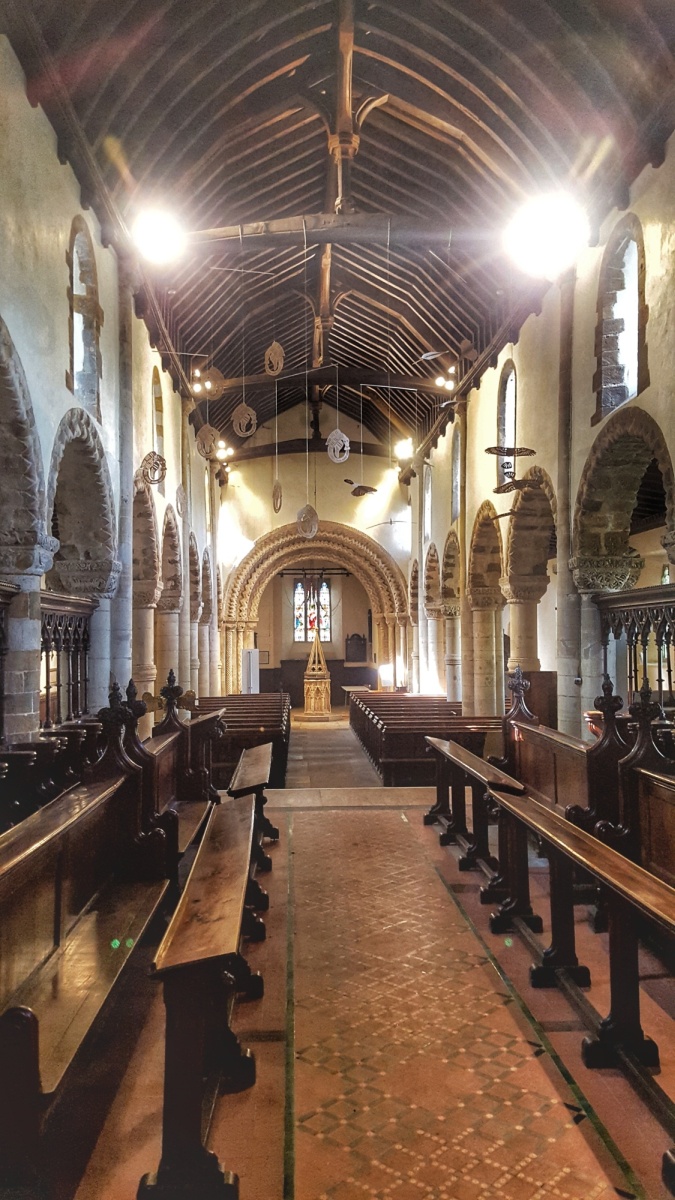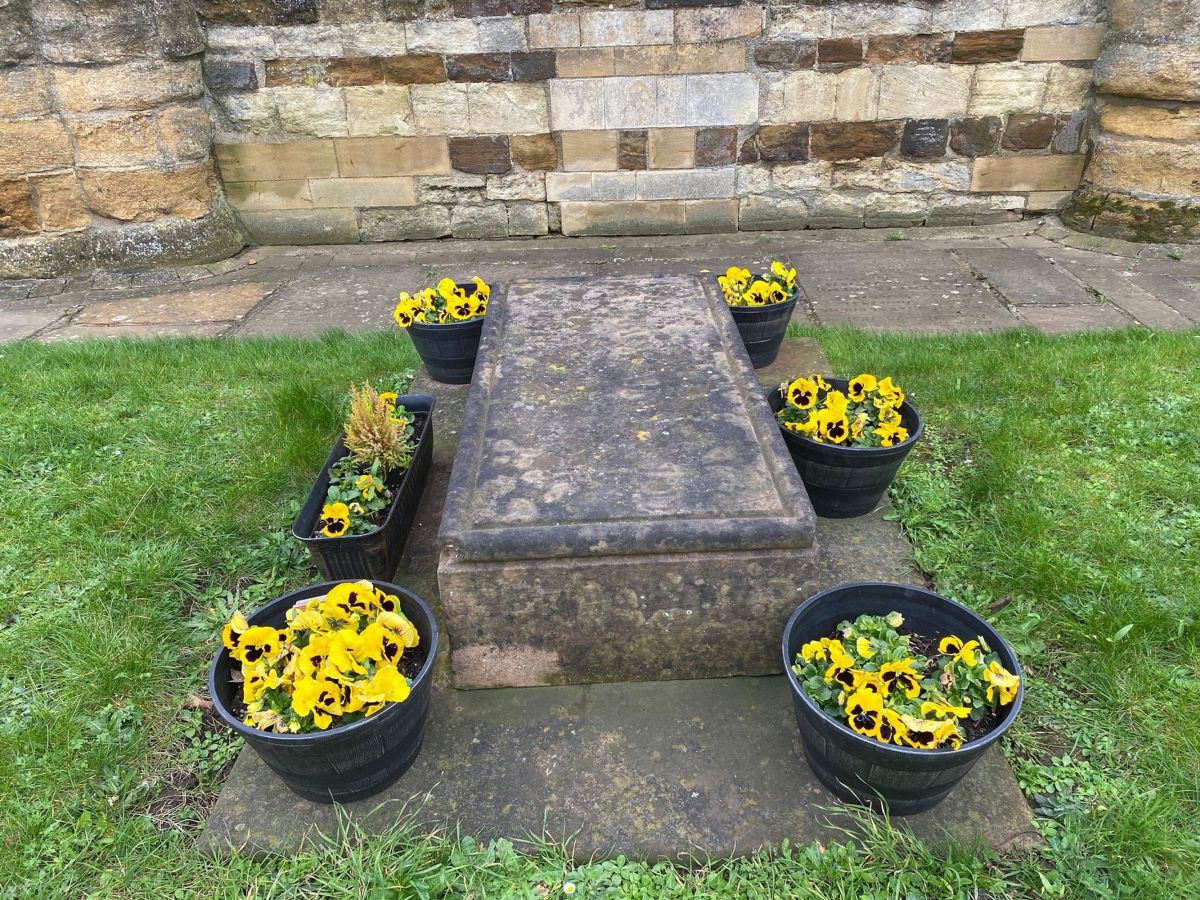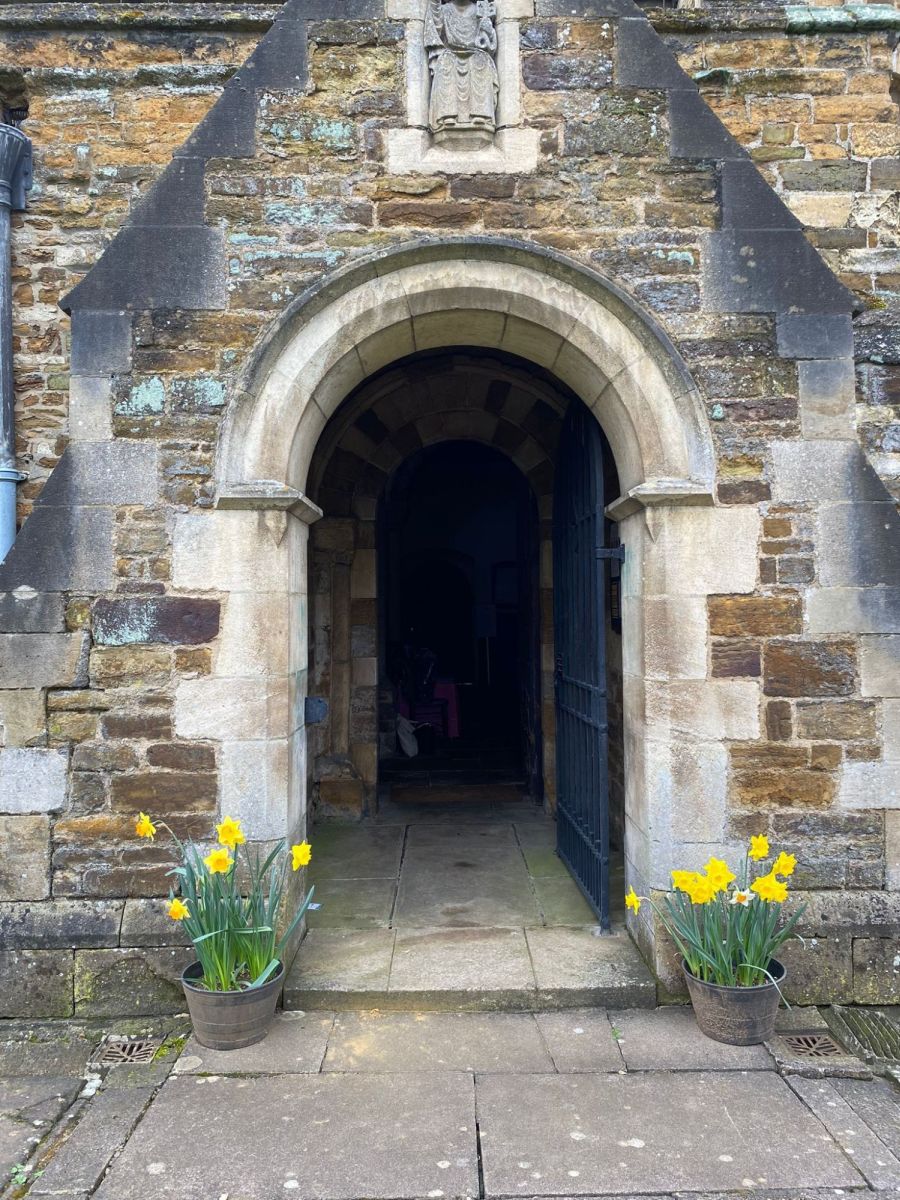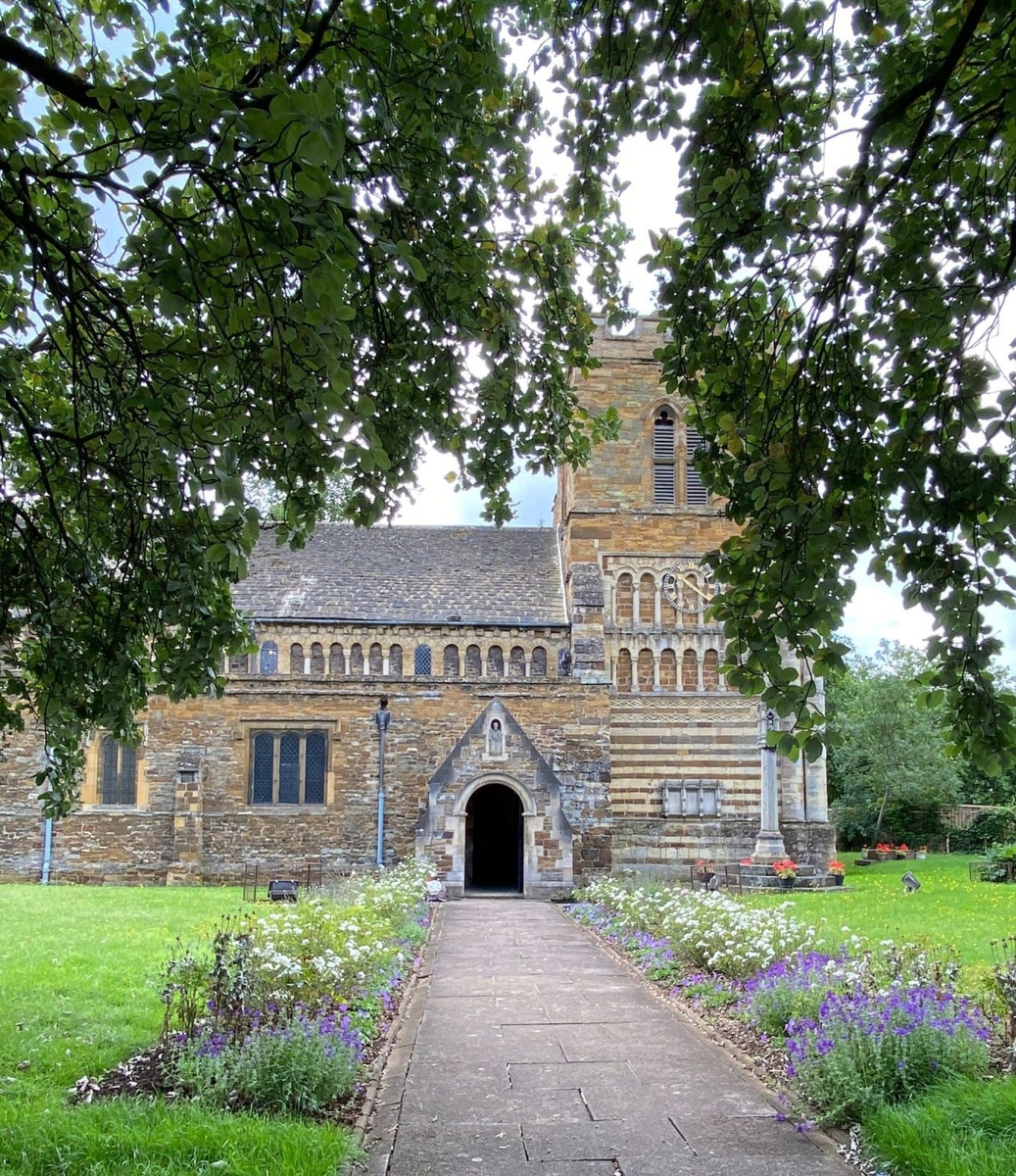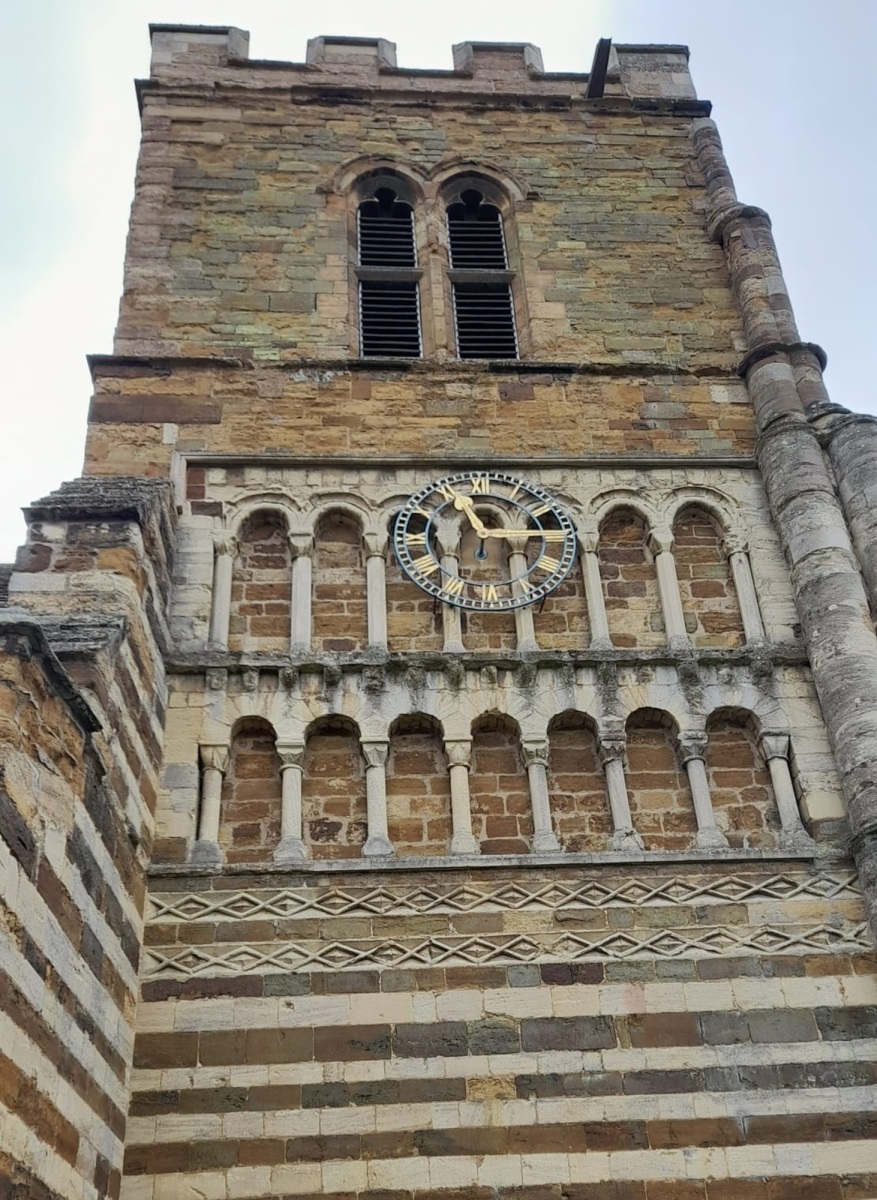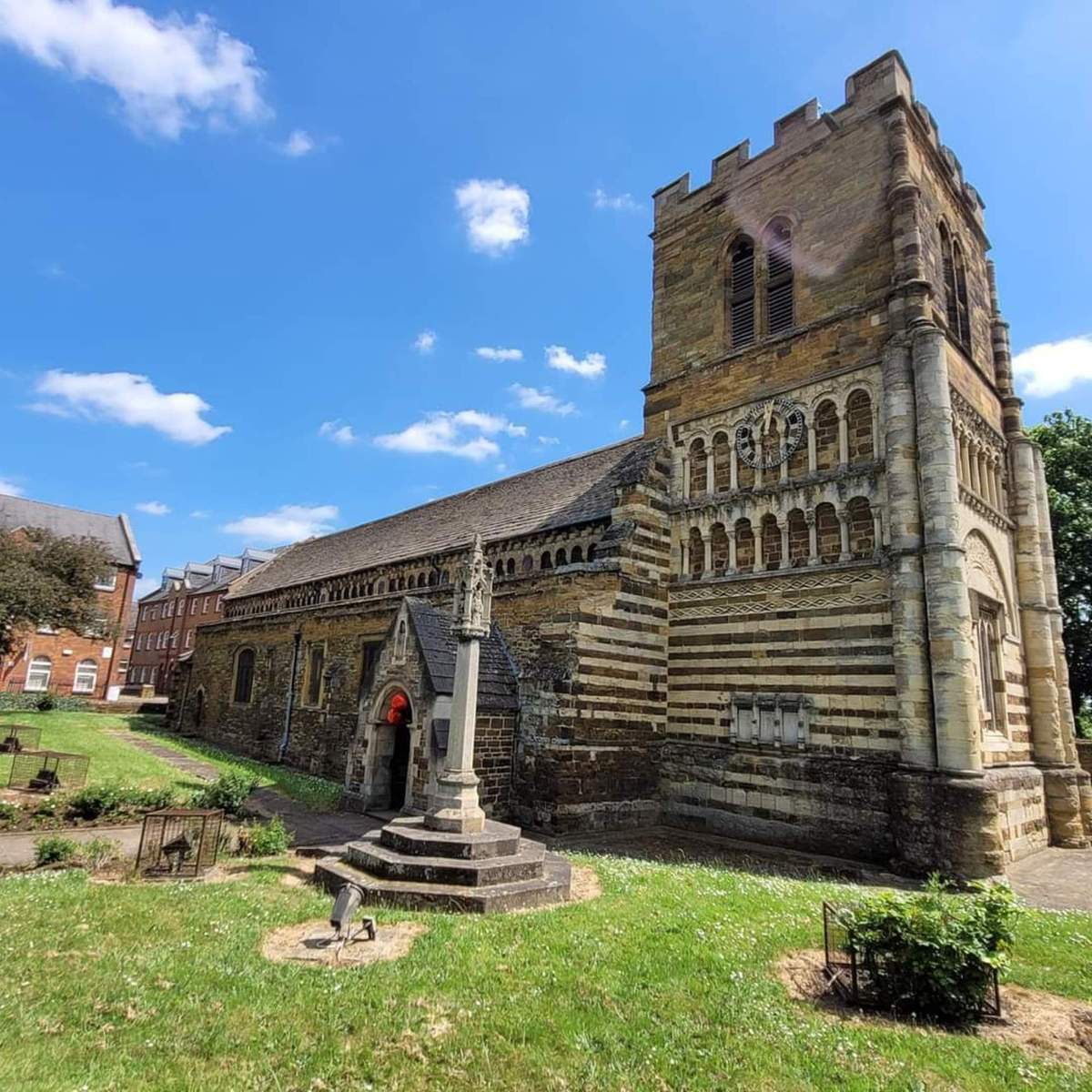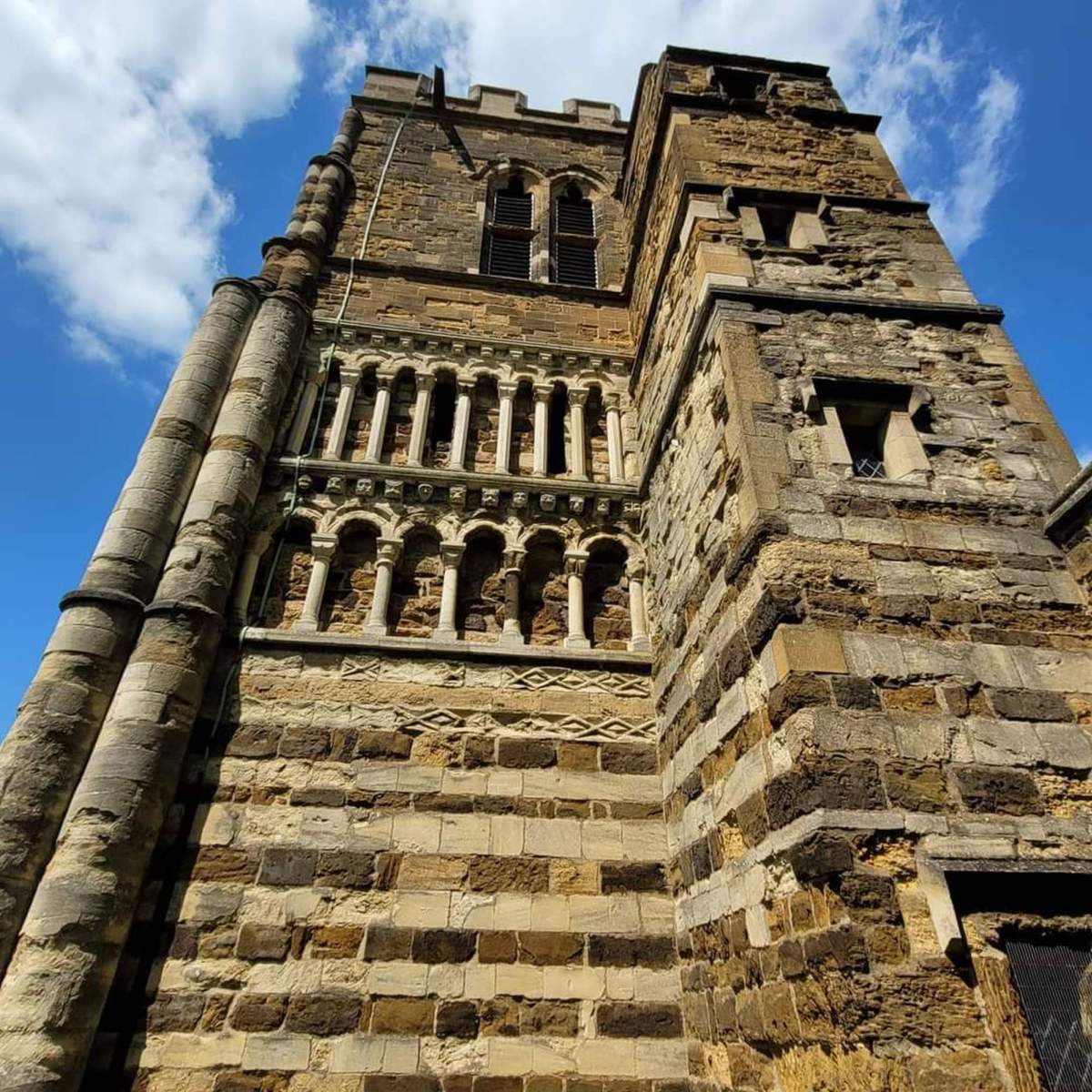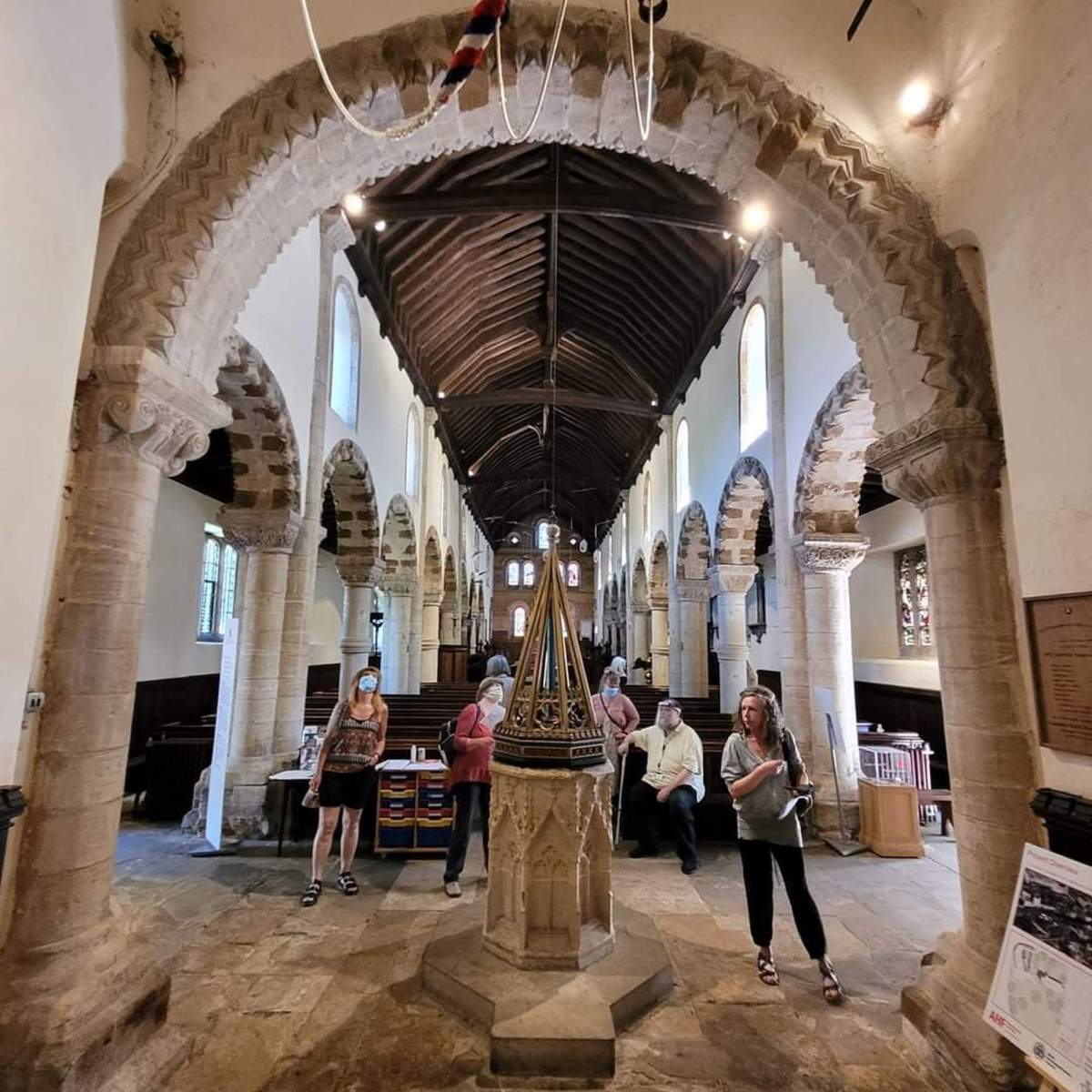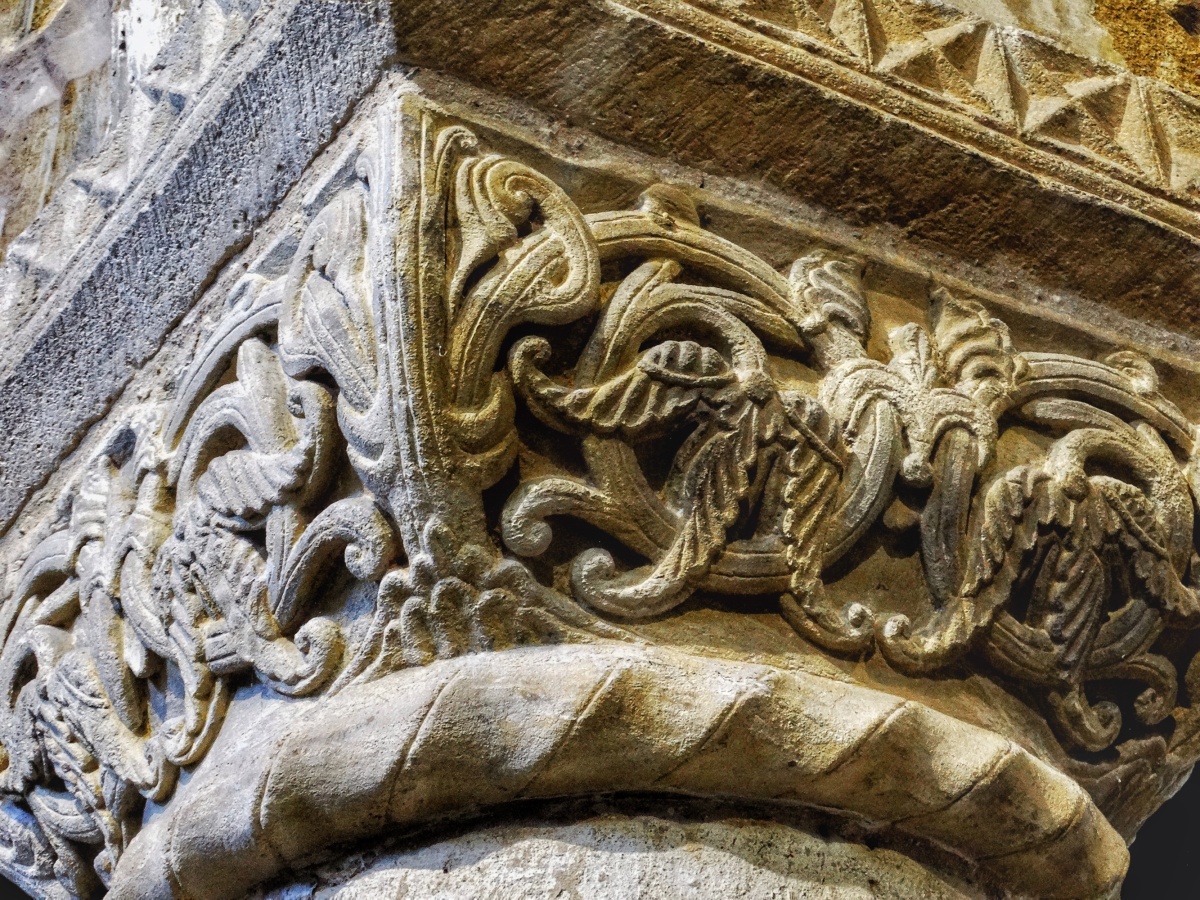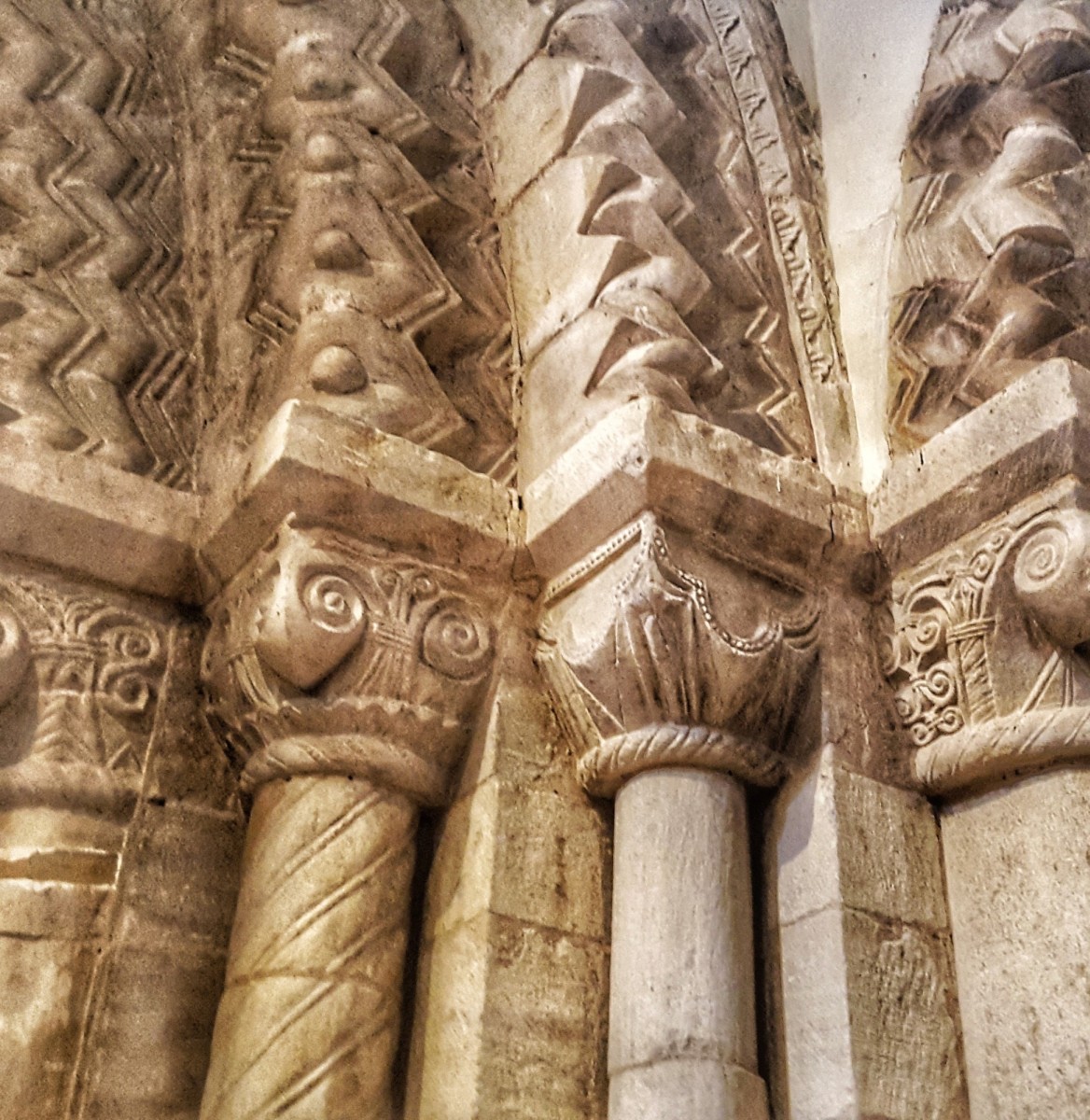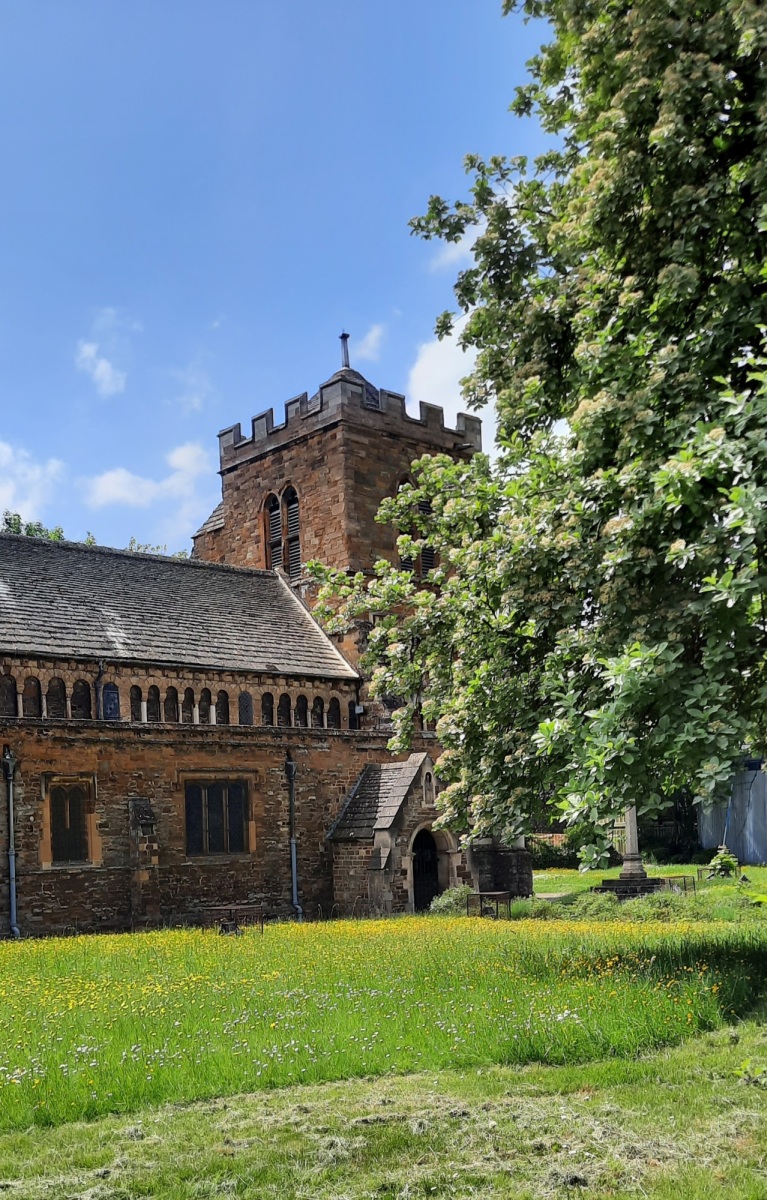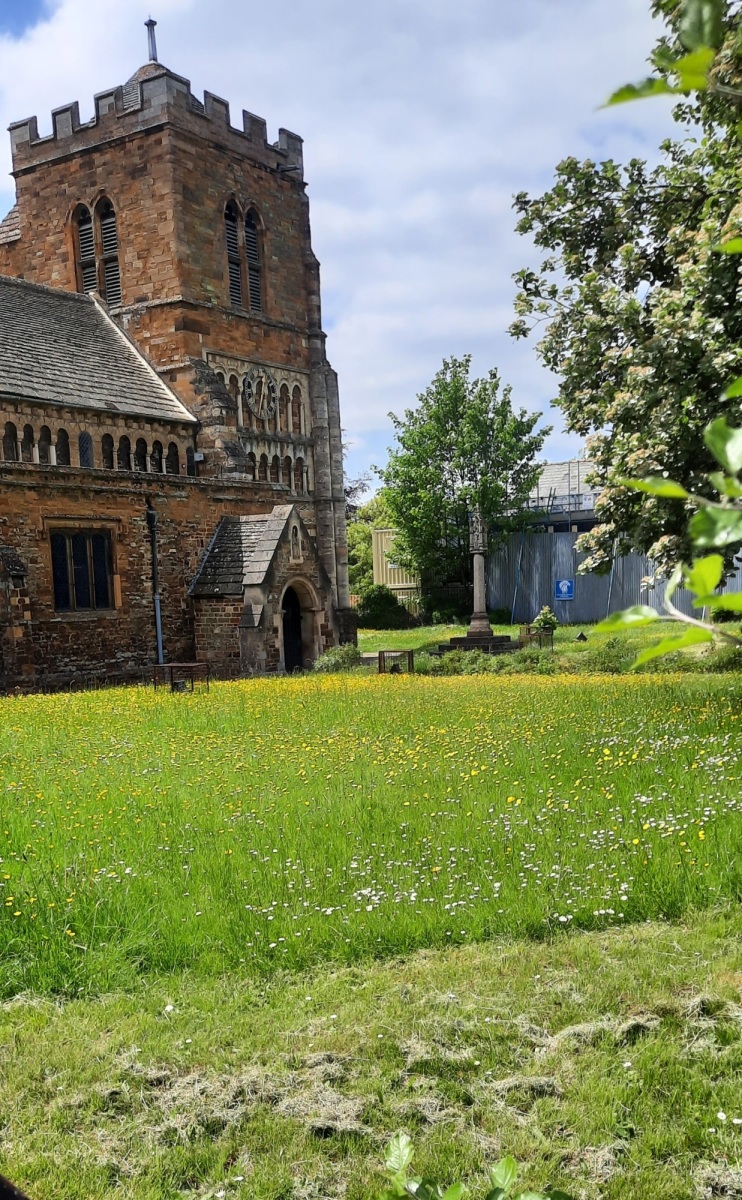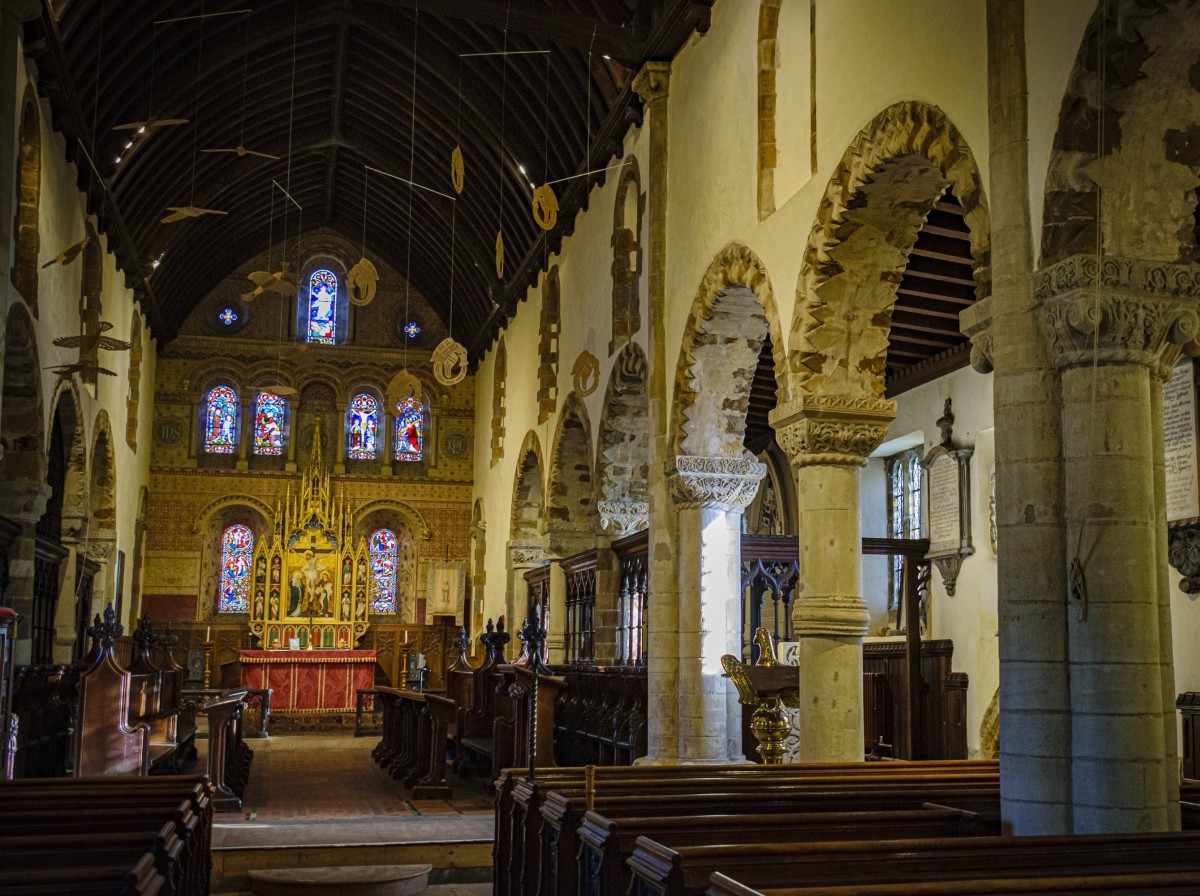St Peter’s in History
St Peter’s lies between the site of the Anglo-Saxon hall built about 800 AD and the site of the Norman Castle built by Simon de Senlis I about 1100. Recent archaeological research suggests that there were two earlier churches here, first a wooden building and then one of stone.
All Saints’ Church, St Giles’ Church and the Church of the Holy Sepulchre were all founded in the early 12th century. The St. Peters re-build is thought to be mid 12th-century. We do not have evidence about exactly when the present Romanesque church was built. Its unusual design with no break between the nave and the chancel suggests that St Peter’s was not a parish church but continued its minster role as mother church with St Michael Upton and St John Kingsthorpe as its chapels.
The magnificence and detail of the stone sculpture suggest that the Norman Earl of Northampton, Simon de Senlis II must have commissioned the building program. Art historians date this present building to c 1150AD.
Similarities are apparent in the style of sculpture at Reading Abbey, King Henry I’s mausoleum church. Art historians draw parallels with Durham Cathedral. Motifs occurring in the sculpture patterns indicate a close link with the monks of St Andrews Priory which was Northampton’s Cluniac monastery.
Saxon St Peter’s is reputed to have housed the shrine of St Ragener, said to be kinsman to St Edmund, the East Anglian king, and who was slain with his uncle by the Danes in 870. The legend tells that St. Ragener’s burial place was discovered in St Peter’s during the reign of King Edward the Confessor and many miracles ensued. There is no historical evidence for this tale.
Devotion to an altar dedicated to St Ragener continued in the Norman church at least until the 15th century. We have this evidence from the Wills of townspeople up until the Reformation.
St Peter’s today
The present building retains many medieval features. There is striking two-tone stonework both outside and in, rich chevron carvings on the round arches of the chancel and nave, and individually carved capitals with their intricate, naturalistic designs. The round-arched arcading all along the exterior walls just below the roof is decorated by corbel heads.
In the south aisle is displayed the magnificent stone slab, with its birds and beasts and its Green Man. It was discovered in a ditch on Black Lion Hill. It appeared in 1843 as a lintel to the door frame of a local cottage. Some think it may have been associated with St. Ragener’s tomb, but for this, there is no evidence.
The west tower had fallen by 1607 and was rebuilt later in the 17th century. It was moved about 12 feet to the east, shortening the nave. The sumptuous triple arch at the west end of the nave was carefully rebuilt and the tower retains its Norman design with external round-arched arcading. The tower has a ring of 8 bells, first peeled in 1739 and still in regular use.
The recent restoration by the Churches Conservation Trust has highlighted the 19th-century contribution to St Peter’s. The east end was rebuilt by Sir George Gilbert Scott in the 1850s and the whole church was re-roofed at that time. Scott lowered the floor of the nave and aisles by 1 foot to provide the then conventional steps up to the chancel thereby removing one of the distinct features of St Peter’s. Scott’s second son, John Oldrid Scott, carried out a scheme of stencilled decoration to the east wall in 1878-9 and an ornately carved reredos with paintings by Burlison & Grylls was installed. There is a fine brass lectern, the font has a striking painted cover by George Gilbert Scott, and there are some pleasant stained glass windows from the second half of the 19th century.
William Smith, an important pioneer of the science of geology, is buried in the churchyard, just west of the tower. His memorial, a bust carved by Matthew Noble, is on the west wall of the south aisle. Smith died in 1839 at nearby Hazelrigg House in Marefair, while staying with George and Ann Elizabeth Baker. Their memorial is nearby. They were leaders in the restoration of the church. It was Ann Elizabeth who unpicked the plaster from the carved capitals, which had covered them up since the Reformation, revealing the splendour of the sculpture St Peter’s.

